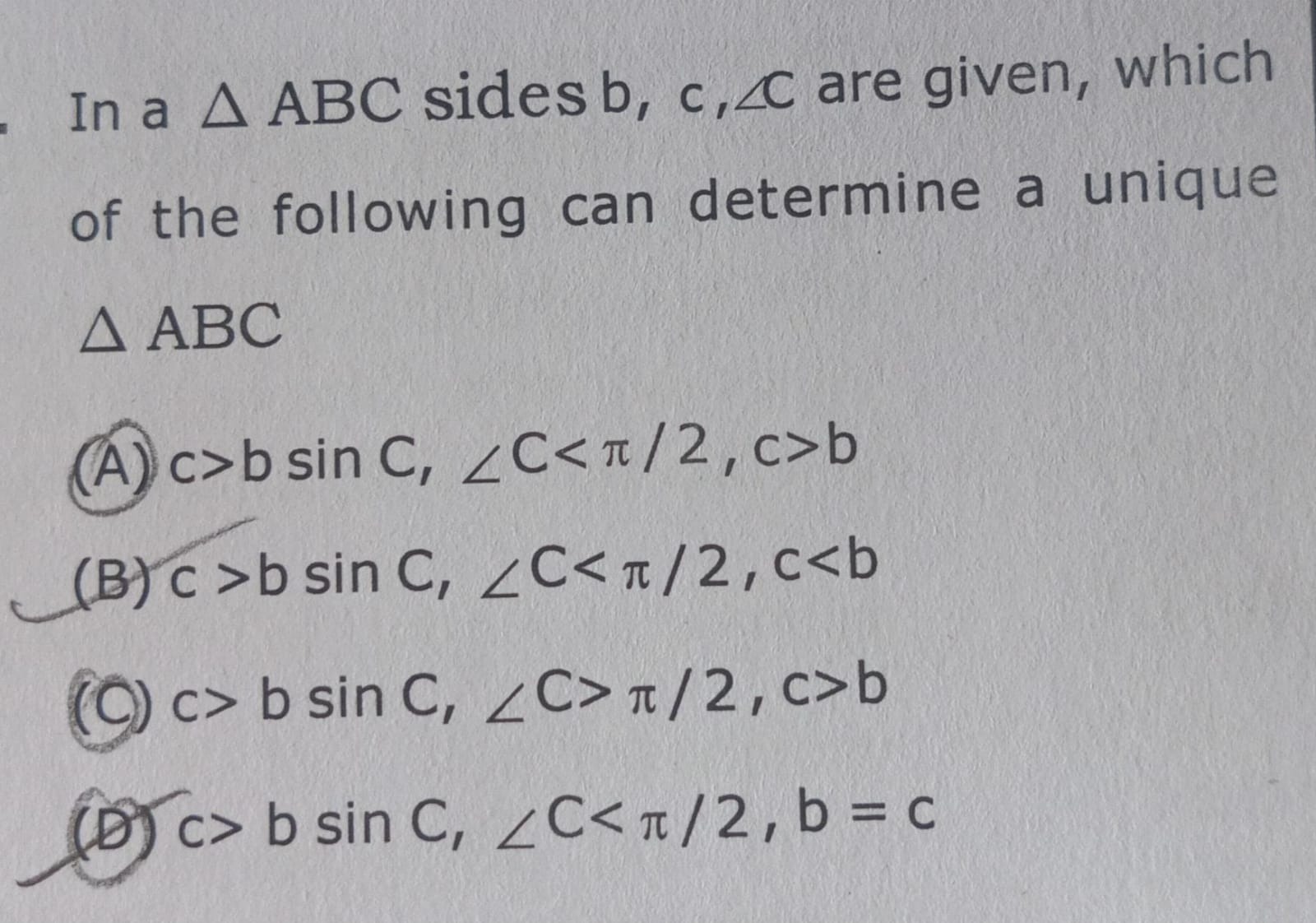Question
Question: In a $\triangle$ ABC sides b, c, $\angle$C are given, which of the following can determine a unique ...
In a △ ABC sides b, c, ∠C are given, which of the following can determine a unique △ ABC

A
c>b sin C, ∠C<π/2,c>b
B
c >b sin C, ∠C<π/2, c<b
C
c> b sin C, ∠C>π/2,c>b
D
c> b sin C, ∠C<π/2, b = c
Answer
c>b sin C, ∠C<π/2,c>b
Explanation
Solution
Given b,c,C. We are looking for angle B using sinB=cbsinC.
Condition (A): c>bsinC, C<π/2, c>b.
Since c>bsinC, there are potentially two values for B: B1 (acute) and B2=π−B1 (obtuse).
Since C<π/2, we are in the scenario where the ambiguous case can occur.
However, we are also given c>b.
We know that two triangles exist if C<π/2, c>bsinC, and c<b.
One triangle exists if C<π/2, c>bsinC, and c≥b.
Option (A) gives C<π/2, c>bsinC, and c>b. This fits the condition c≥b.
Thus, under condition (A), there is a unique triangle.
